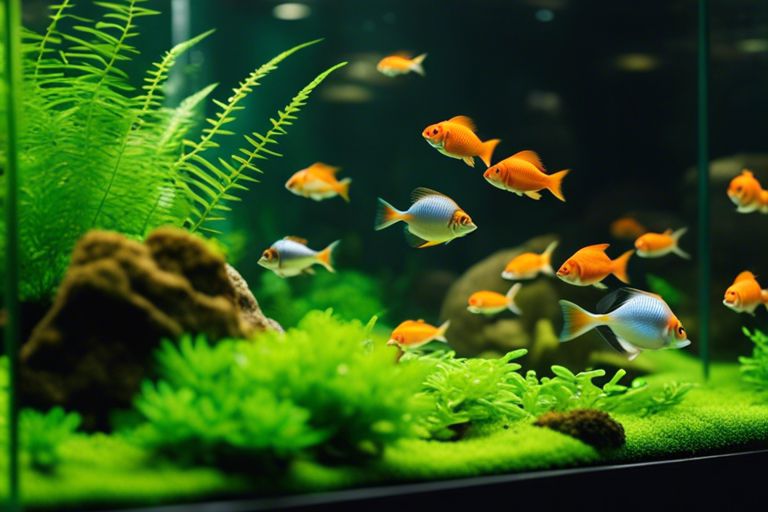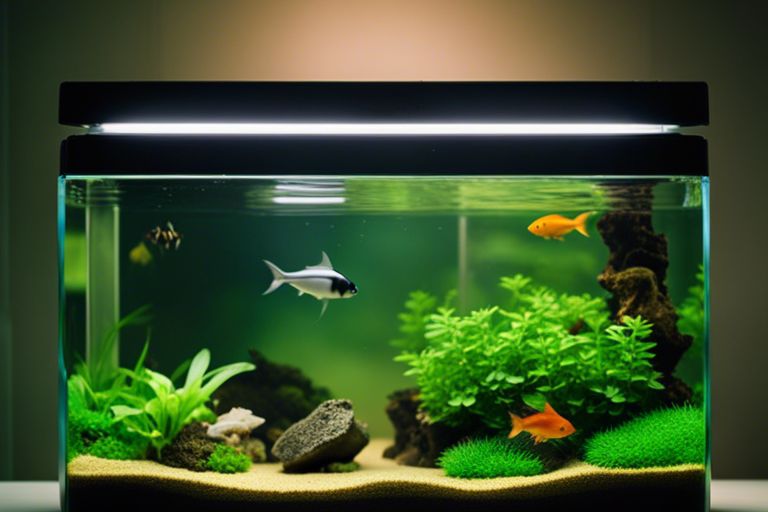Over the years, aquarium enthusiasts have learned that maintaining proper levels of ammonia and nitrate is crucial for the health and well-being of their aquatic pets. Just like SUVs dominate the American automotive landscape, these chemical compounds can dominate your aquarium if left unchecked. In this informative blog post, we will probe into the importance of balancing ammonia and nitrate levels in your aquarium, providing tips and tricks to ensure a thriving aquatic environment for your beloved fish and plants. From understanding the nitrogen cycle to implementing effective filtration systems, we’ll cover everything you need to know to keep your aquarium pristine and your aquatic friends happy.

Understanding Ammonia in Your Aquarium
The Nitrogen Cycle and Ammonia Production
To effectively maintain a healthy aquarium, it is crucial to understand the nitrogen cycle. The nitrogen cycle is a natural process where beneficial bacteria break down organic matter, such as fish waste and uneaten food, into ammonia. Ammonia is highly toxic to fish and can result in serious health issues if not properly controlled.
Identifying Signs of High Ammonia Levels
To ensure the well-being of your aquatic pets, it is imperative to be able to recognize the signs of high ammonia levels in your aquarium. Common indicators include fish gasping for air at the water’s surface, lethargy, loss of appetite, red gills, or unusual swimming behavior. Regular water testing is the best way to monitor and prevent ammonia spikes.
Plus, it’s important to note that ammonia levels can spike due to overfeeding, overcrowding, inadequate filtration, or disruptions in the nitrogen cycle. Therefore, maintaining a balanced ecosystem and conducting regular water changes are key practices in keeping ammonia levels in check.

Controlling Nitrate Levels
Converting Ammonia to Nitrate
Clearly, one of the key processes in maintaining nitrate levels in your aquarium is the conversion of ammonia to nitrate. This conversion is primarily achieved through the nitrification process, where beneficial bacteria such as Nitrosomonas and Nitrobacter break down ammonia into nitrite and then nitrate.
Strategies for Reducing Excessive Nitrate
On Levels. When nitrate levels in your aquarium become excessive, it is crucial to employ strategies to reduce their concentration. Regular water changes, proper filtration, and the use of live plants can effectively lower nitrate levels in your tank.
Converting excess nitrates back to nitrogen gas through denitrification can also be a useful strategy. This process can be facilitated by creating anaerobic conditions in your filtration system or substrate where denitrifying bacteria can thrive and convert nitrates into harmless nitrogen gas.
Balancing Techniques and Maintenance
Regular Testing and Monitoring Protocols
Protocols for testing and monitoring ammonia and nitrate levels in your aquarium are crucial for maintaining a healthy environment for your aquatic life. Regular testing should be conducted using liquid test kits specifically designed for ammonia and nitrate levels. These tests should be performed at least once a week to ensure early detection of any spikes in levels.
Water Change Procedures and Frequency
Frequency is key when it comes to water change procedures in your aquarium. It is recommended to perform a 25% to 50% water change every 1 to 2 weeks, depending on the size of your tank and the bio-load of your fish. This routine maintenance is crucial for reducing ammonia and nitrate levels, as well as replenishing crucial minerals and nutrients for your aquatic ecosystem.
Testing the water before and after water changes can help you track the effectiveness of your maintenance routine. If you notice a significant increase in levels after a water change, you may need to adjust your frequency or the amount of water changed to achieve a better balance.

Advanced Considerations
- The Role of Aquarium Plants in Nutrient Control
Role: Nutrient Absorption Benefits: Reduced Ammonia and Nitrate Levels Aquarium Plants in Nutrient Control
Aquarium plants play a crucial role in maintaining balanced ammonia and nitrate levels in your aquarium. They absorb nutrients like ammonia and nitrates as part of their natural growth process, effectively reducing these harmful substances that can stress your fish. By incorporating live plants in your aquarium setup, you create a natural filtration system that helps in nutrient control and overall ecosystem health.
- The Impact of Fish Load and Feeding Practices
Fish Load: Balancing Stocking Levels Feeding: Proper Portion Control Nutrient Impact of Fish Load and Feeding Practices
Nutrient levels in your aquarium can be heavily influenced by the number of fish you have and how much you feed them. Overstocking can lead to excess ammonia and nitrate production, while overfeeding can result in uneaten food decaying and releasing more nutrients into the water. It is crucial to strike a balance with your fish load and feeding practices to prevent nutrient imbalances and maintain a healthy aquatic environment.
Plants in your aquarium not only add aesthetic appeal but also serve a functional purpose in nutrient management. Besides absorbing ammonia and nitrates, they also release oxygen through photosynthesis, which is crucial for the health of your aquatic inhabitants. Therefore, incorporating a variety of live plants in your aquarium can significantly contribute to maintaining optimal water quality and a thriving ecosystem.
To wrap up
Following this guide on balancing ammonia and nitrate levels in your aquarium is crucial for the health and well-being of your fish and other aquatic creatures. By monitoring these levels regularly, performing water changes, and adding beneficial bacteria, you can create a stable and healthy environment for your aquarium inhabitants. Remember that maintaining proper ammonia and nitrate levels is crucial in preventing stress and disease in your aquatic pets. So, stay vigilant and consistent in your efforts to ensure a thriving ecosystem in your aquarium.
FAQ
Q: Why is balancing ammonia and nitrate levels important in your aquarium?
A: Balancing ammonia and nitrate levels is crucial for the health and well-being of your fish and other aquatic organisms. High levels of ammonia and nitrate can be toxic and lethal to the inhabitants of your aquarium.
Q: What are the sources of ammonia and nitrate in an aquarium?
A: Ammonia is typically produced from fish waste, uneaten food, and decaying plant matter. Nitrate is a byproduct of the breakdown of organic waste by beneficial bacteria in the aquarium.
Q: How can I test the levels of ammonia and nitrate in my aquarium?
A: You can use a liquid test kit specifically designed to measure ammonia and nitrate levels in your aquarium. These test kits are easy to use and provide accurate results.
Q: What are the ideal levels of ammonia and nitrate in an aquarium?
A: The ideal level of ammonia in an aquarium should be zero, while nitrate levels should be kept below 20 ppm (parts per million) for freshwater aquariums and below 5 ppm for reef aquariums.
Q: How can I reduce ammonia levels in my aquarium?
A: To reduce ammonia levels, you can perform regular water changes, avoid overfeeding your fish, and ensure proper filtration and aeration in the aquarium. You can also add ammonia-neutralizing products to the water.
Q: How can I lower nitrate levels in my aquarium?
A: To lower nitrate levels, you can maintain a regular cleaning schedule, avoid overstocking your aquarium, and ensure efficient biological filtration. Live plants can also help absorb nitrates from the water.
Q: What are the potential consequences of high levels of ammonia and nitrate in an aquarium?
A: High levels of ammonia and nitrate can lead to stress, illness, and ultimately death in fish and other aquatic organisms. It can also disrupt the balance of the aquarium ecosystem and lead to algae blooms and other water quality issues.











